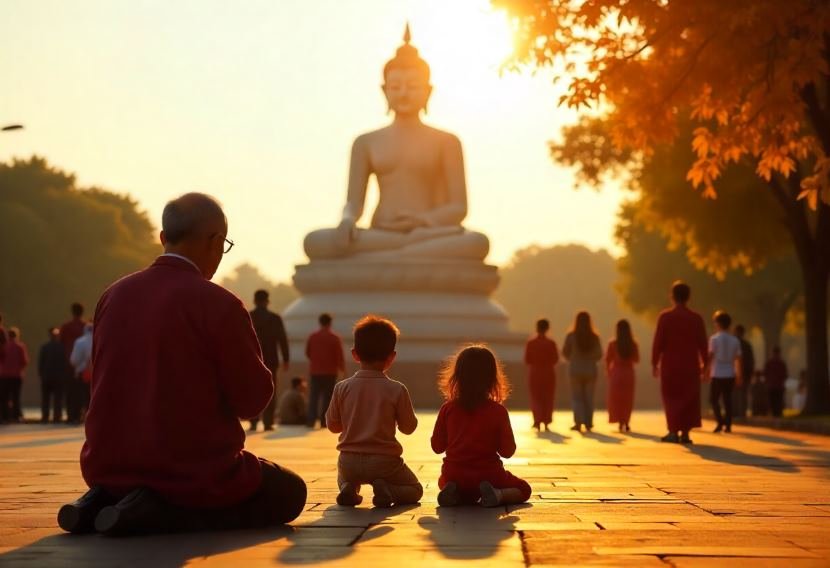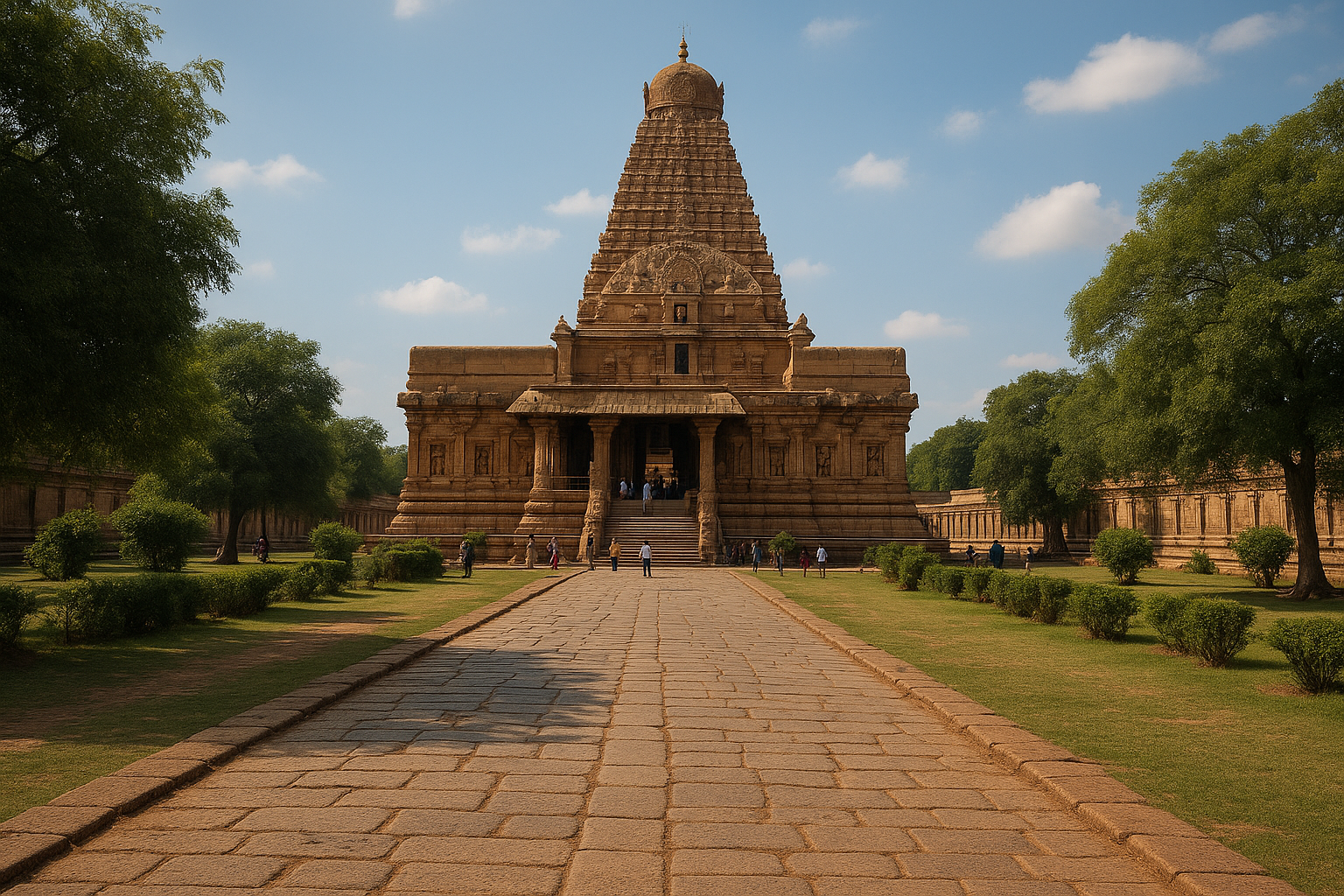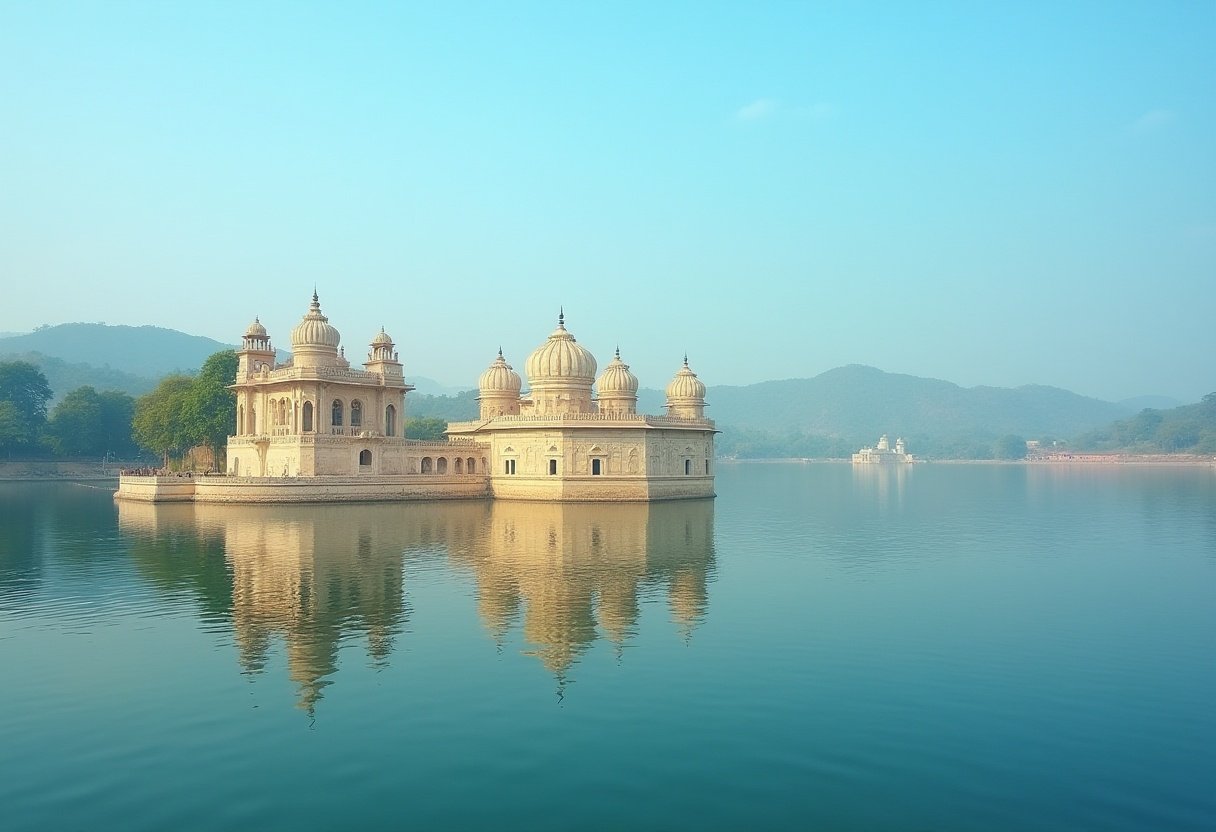Spiritual Travel
India Reopens Doors to Chinese Tourists with E-Visas: Agra, Delhi, Bodh Gaya Set for Massive Tourism Surge

Saturday, July 26, 2025
India officially restarts issuing e-visa to Chinese nationals after nearly five years, the Indian embassy announced. It is the first important move ending a freeze on visas after the pandemic and worsening border tensions, and reflects the success of talks between the foreign and home ministries over the past few months. With the renewed friendship of these two nations, India will also be reopening its border to tourism with China, which will create new opportunities for cross-cultural tourism, business relationships and spiritual tourism. This represents a critical time to build people-to-people links and the iconic Indian cities including Agra, Delhi and Bodh Gaya are expected to receive the maximum number of Chinese tourists.
In tandem with India’s move, Chinese authorities have reopened the sacred pilgrimage route to Mount Kailash and Lake Manasarovar in Tibet for Indian pilgrims. These spiritual landmarks, significant to Hindus, Buddhists, and Jains, were closed to Indian visitors for years, adding an emotional and spiritual dimension to the renewed ties between the two nations. Together, these two developments signal a brighter future for tourism between India and China, with spiritual and cultural tourism taking center stage in fostering mutual understanding and trust.
The Revival of Chinese Tourism to India
Before the pandemic, Chinese nationals accounted for nearly 27% of India’s inbound tourism, with around 300,000 arrivals recorded in 2019 alone. The renewed visa regime is expected to jumpstart India’s tourism sector, which is still recovering from the pandemic’s impact. Tour operators are optimistic that the return of Chinese visitors will breathe new life into cultural tourism, particularly in spiritual circuits and heritage destinations that have long appealed to Chinese tourists.
India is home to numerous destinations of historical, spiritual, and cultural significance that have drawn Chinese visitors for years. The allure of India’s rich heritage, intertwined with Buddhism and ancient history, makes it a top destination for those seeking to explore the roots of spiritual teachings. With the e-visa now available, Chinese nationals can easily apply online through the official Indian visa portal, book an appointment, and submit their documents at designated centres in Beijing, Shanghai, or Guangzhou, making travel more accessible than ever before.
Spiritual and Heritage Destinations That Appeal to Chinese Tourists
Bodh Gaya, Bihar
Buddhists from China and from around the world have often flocked to Bodh Gaya, where the Buddha found enlightenment. The Mahabodhi Temple, a world heritage site of UNESCO, attracts thousands of visiting Chinese Buddhist pilgrims every year. Not far from Bodh Gaya, other spiritual sites like Nalanda, Rajgir and Vaishali have followed suit, now important waypoints in India’s expanding Buddhist tourism circuit. Not only do these sacred sites hold profound spiritual meaning, they are learning institutions for anyone wanting to learn more about Buddhism’s history and teachings.
Golden Triangle: Delhi, Agra, Jaipur
The Golden Triangle, encompassing Delhi, Agra, and Jaipur, is another popular circuit for Chinese tourists, offering a mix of cultural, architectural, and historical wonders. In Agra, the Taj Mahal remains one of the most iconic attractions, drawing millions of visitors annually. The Qutub Minar in Delhi, along with the historic forts and palaces of Jaipur, are also key highlights for Chinese tourists, who traditionally flock to these destinations in group tours. The combination of spiritual significance and architectural marvels makes the Golden Triangle an essential part of the Chinese tourist itinerary in India.
Buddhist Circuit and Swadesh Darshan Scheme
India’s Swadesh Darshan scheme, which aims to promote tourism in lesser-known but culturally significant areas, includes several Buddhist circuit routes. These routes connect spiritual destinations across various states, creating a comprehensive tour that traces the life and teachings of Buddha. The routes not only cater to Buddhist pilgrims but also attract tourists interested in India’s spiritual history. The expansion of the Buddhist circuit, integrated into India’s broader tourism plans, is expected to see a surge in Chinese visitors, particularly those looking for an immersive spiritual experience.
The Kailash Manasarovar Yatra and Cultural Exchange
In addition to India’s visa resumption, Chinese authorities have lifted restrictions on the Kailash Manasarovar Yatra, allowing Indian pilgrims to once again embark on this sacred journey to Tibet. Mount Kailash and Lake Manasarovar are revered by Hindus, Buddhists, Jains, and Tibetans, making the reopening of this pilgrimage route a highly symbolic gesture in strengthening cross-border cultural and spiritual ties. For many Indian pilgrims, the chance to visit these sacred sites has been a long-awaited opportunity, and the reopening is expected to foster greater cultural exchange and religious harmony between the two nations.
How to Apply for an E-Visa to India
For Chinese nationals looking to visit India, applying for an e-visa is now a seamless process. Travelers can apply online through the official visa portal, where they will need to provide the necessary documents and book an appointment at the designated visa centres in Beijing, Shanghai, or Guangzhou. With the implementation of e-visas, the application process is more convenient than ever, paving the way for a smoother travel experience.
Conclusion: A New Era of India-China Tourism
The restarting of e-visas with Chinese nationals and the reopening of the Kailash Manasarovar Yatra route mark the ushering of a new era of India-China relationship. With both countries eyeing spiritual and cultural tourism as the way forward to mend relations, major tourist destinations like Agra, Delhi, Bodh Gaya are set to witness exponential increase in Chinese footfall. This measure serves not only to boost tourism, but also enhances the understanding and respect between ordinary people. However, as travel restrictions are lifted and spiritual tourism increases, India and China have once more begun to discover the power of shared heritage to overcome divisions and build a stronger and more hopeful future.
Spiritual Travel
India’s Top 100 Temples: Gateways to Spiritual Heritage and Living Culture

For centuries, India’s temples have been more than architectural marvels they are living repositories of history, faith and community. With thousands of temples dotting the landscape, each with its own story, the experience of temple travel is as much about self-discovery as it is about art, culture or devotion. In 2025, as spiritual travel and heritage tourism rise, India’s top temples are drawing seekers from across the world, eager to connect with the country’s vibrant tapestry of beliefs.
Why Temples Still Matter
According to a 2024 report by the World Travel & Tourism Council, heritage and spiritual tourism in India is projected to grow at over 10% annually, driven by a rising interest in experiential journeys, architectural wonders and immersive rituals (WTTC, 2024). Unlike conventional sightseeing, temple visits offer a layered experience inviting travelers to participate in age-old traditions, learn local history and witness the convergence of the sacred and the everyday.
The Breadth of India’s Temple Landscape
India’s top 100 temples reflect extraordinary diversity not only in architecture and ritual, but in the stories they preserve. From the intricate Dravidian towers of Tamil Nadu to the soaring shikharas of North India from remote Himalayan shrines to sun-drenched coastal sanctuaries, each temple is a microcosm of its region’s spiritual and cultural identity.
While it’s impossible to cover all 100 in depth here are a few that illustrate the range and resonance of India’s sacred sites:
Kashi Vishwanath (Varanasi, Uttar Pradesh)
One of Hinduism’s holiest shrines, Kashi Vishwanath stands at the heart of Varanasi, India’s eternal city on the Ganges. Pilgrims believe a visit here can liberate the soul. The temple’s bustling corridors, the rhythmic chants and the morning rituals on the riverbank create an atmosphere thick with centuries of devotion.
Brihadeeswarar Temple (Thanjavur, Tamil Nadu)
A UNESCO World Heritage site, this 11th-century Chola masterpiece is celebrated for its massive granite tower and exquisite murals. Beyond its scale, Brihadeeswarar is a living center of Tamil culture hosting classical dance festivals and daily rituals that have remained unchanged for centuries.
Jagannath Temple (Puri, Odisha)
Famed for its annual Rath Yatra (Chariot Festival), Jagannath Temple draws millions each year. The temple’s kitchen reputed to be the largest in the world feeds thousands of devotees daily, reflecting the ethos of service at the heart of the tradition.
Kedarnath Temple (Uttarakhand)
Perched high in the Himalayas, Kedarnath is one of the Char Dham pilgrimage sites. Accessible only on foot for much of the year, the temple’s remote setting adds to its aura of mystery and resilience. Many travelers recount the trek as a transformative journey in itself marked by moments of solitude and awe.
Meenakshi Temple (Madurai, Tamil Nadu)
A riot of color and sculpture, the Meenakshi Temple complex is both a spiritual center and a hub of South Indian art and craft. Daily processions, music and dance fill the temple grounds, making it a living celebration of the divine feminine.
Golden Temple (Amritsar, Punjab)
Also known as Harmandir Sahib, the Golden Temple is Sikhism’s most sacred site. With its gleaming gold dome reflected in the Amrit Sarovar (holy tank) and its community kitchen serving free meals to all visitors, the temple stands as a symbol of equality and hospitality.
Konark Sun Temple (Odisha)
Shaped like a chariot and adorned with intricate carvings, the 13th century Sun Temple at Konark is both an architectural wonder and a UNESCO World Heritage site. Visitors are drawn not only by its artistry but also by the sunrise rituals and the annual dance festival celebrating Odisha’s heritage.
Virupaksha Temple (Hampi, Karnataka)
Located amidst the ruins of Vijayanagara, the Virupaksha Temple is an active pilgrimage site surrounded by UNESCO listed monuments. Its gopurams (gateway towers) and mural covered halls are a testament to South India’s artistic and spiritual legacy.
Kamakhya Temple (Guwahati, Assam)
Perched atop Nilachal Hill, Kamakhya is one of the most revered Shakti Peethas. Known for its powerful Tantric rituals and vibrant Ambubachi Mela, the temple is a focal point for devotees seeking blessings of the Mother Goddess.
Ranakpur Jain Temple (Rajasthan)
Famous for its 1,444 intricately carved marble pillars, this 15th century Jain temple is celebrated for its harmony and craftsmanship. The cool, meditative interiors offer a striking contrast to the surrounding Aravalli hills.
Behind each temple lies a web of legend, ritual, and human endeavor. The experience is rarely just architectural it’s participatory. Travelers are invited to join morning aartis, witness age-old festivals and connect with local communities who are both guardians and storytellers.
A 2023 survey by India’s Ministry of Tourism found that 68% of international spiritual travelers value personal stories and hands-on rituals over passive sightseeing. For many, a single visit can spark a journey of self-inquiry, empathy and respect for India’s living heritage.
The Journey Continues
From the snow-clad shrines of the Himalayas to the coastal sanctuaries of the south, India’s top temples are not just relics they are dynamic spaces where history, faith and culture meet. As spiritual travel evolves in 2025, these sites remain both gateways and destinations, offering the possibility of renewal, reflection and a deeper sense of belonging.
Spiritual Travel
From devotion to discovery

With the waning of Deep Amavasya, the sacred month of Shravan has commenced. It is a time held in high reverence across the Indian subcontinent. For followers of Hinduism, Shravan marks a season of devout fasting, spiritual disciplines and vows. Jains also observe the Chaturmas period during this same window, aligning their practices with seasonal sanctity.
In Maharashtra, the fervour of Ashadhi Ekadashi, celebrated by scores of Vitthal devotees, has only just settled. Vitthal is revered as an incarnation of Krishna, and scriptures identify Ashadhi Ekadashi as the onset of Devshayani Ekadashi, when Lord Vishnu, the cosmic preserver, is believed to slip into celestial slumber for four months. In this interval, according to traditional belief, Lord Shiva assumes a more awakened and responsive presence. This has prompted a surge in pilgrimage to Shiva holy sites.
Renowned poet Moropant once underlined the value of spiritual travel with these words:
“By journeying through lands, one earns the company of the learned
Studying scriptures and texts sharpens one’s wisdom and insight.”
His sentiment rings true today. Travel, especially pilgrimage, has long served as a gateway to personal growth in India. It offers exposure to new cultures, new minds and age-old wisdom. The ancient practice of spiritual tourism, from Char Dham yatras to seasonal pilgrimages, remains a potent thread in the nation’s cultural fabric. While modernity may have diluted some of its religious undertones, the essence endures. Indians continue to venture forth, seeking not just rituals but revelations.
In today’s urban culture, travel has taken a turn towards pleasure-seeking escapes. Picturesque destinations now see throngs of visitors, especially during the monsoon. The rainy season has carved a special niche in modern tourism, with the younger generation developing a clear craze for it. The moment the showers begin, youngsters start moving towards their favourite destinations. Forts and waterfalls, in particular, attract overwhelming crowds during this season.
Watch your step
But along with this enthusiasm comes a pressing need for caution. Responsible tourism is the need of the hour. Natural spots must be kept clean, with travellers ensuring minimal waste, especially avoiding plastic items, bags and food wrappers that pollute forests and water sources. Forts demand even more vigilance. The slightest lapse in attention can result in grave accidents. In their pursuit of selfies, hundreds of young travellers have lost their lives.
Informing family in advance about one’s travel plans is essential. Every group must carry a first aid kit. If travelling in a large group, current government norms require one certified doctor to be present. Enough water, fuel and extra batteries for communication devices must be packed.
It’s often seen that youngsters posted in Maharashtra for work choose to explore forts as part of weekend outings. Solo tours have gained popularity in these circles, with many venturing out alone with backpack slung and itinerary undisclosed. Social media may romanticise such solo adventures, but the reality carries numerous risks. When exploring unknown forested terrain, it is advised that at least four people travel together. In remote or unfamiliar regions, hiring a local guide is both safe and enriching.
Religious tourism, though rooted in reverence, often encounters moments of conflict. Devotees must adhere to the rules laid down by the administration of these sacred sites. Today, several temples have introduced dress codes. Visitors must avoid needless disputes and help preserve the sanctity and devotional atmosphere of these places.
Whether it’s a place of worship, a forest trail or a scenic tourist spot, blaring music, loud chatter or boisterous behaviour is best avoided. Nature’s charm is most deeply felt in silence.
At ancient religious sites or amidst natural surroundings, it is important to take in their visible beauty. But maintaining silence and embracing stillness often gives way to a deeper kind of understanding. Nature has long been regarded as a supreme teacher. To learn from it, a sense of humility and quiet discipline is required. With silence, the senses slowly begin to turn inward. And when a person begins to gaze within, many of the universe’s mysteries begin to reveal themselves.
This journey demands a spirit of awareness. It is not just about the destination but also how one engages with it.
Spiritual Travel
Tripura Tourism Experiences Rapid Growth with Tourist Arrivals Surging from Five Lakh to Eight Lakh, Driven by Infrastructure and Religious Site Developments

Friday, July 25, 2025
Tripura, a state in India’s northeastern region, has witnessed a significant surge in tourism, with tourist arrivals jumping from 5.29 lakh in 2018 to 7.60 lakh in 2024. This growth in visitors is attributed to the state government’s committed efforts to boost tourism through infrastructure development, particularly focusing on religious tourism. With the support of the Chief Minister’s office and the Tourism Ministry, Tripura is positioning itself as a key destination in India’s tourism landscape. Notably, government initiatives are revamping important religious sites, improving accessibility, and opening up new avenues for employment and regional development.
The tourism infrastructure projects in Tripura, such as the development of the Kasbeswari Maa Temple and Chaturdash Devta Temple, represent some of the biggest strides the state has taken in recent years. These projects are backed by funding from the Asian Development Bank and have contributed significantly to the overall growth of tourism, while also enhancing the state’s cultural profile on the global stage.
A Rise in Religious Tourism
Tripura’s tourism sector is gaining a reputation for its emphasis on religious tourism. The state’s religious sites, some of which date back centuries, are drawing both domestic and international travelers. The focus on religious landmarks like the Tripura Sundari Temple, Kasbeswari Maa Temple, and Chaturdash Devta Temple is helping the state create a niche for itself in the tourism industry.
The state government is working on creating spiritual tourism routes that include the 51 Shakti Peethas replicas being built in Gomati district, set to open in 2026. The state also plans to develop the cultural and religious significance of these temples, aligning with the national initiative to promote spiritual tourism in India. The government aims to make these sites major tourist hubs by enhancing accessibility and building state-of-the-art amenities for visitors.
Moreover, the development of the Tripura Sundari Temple under the PRASAD scheme has already begun to position Tripura as a destination for religious tourism on the international radar. This success has paved the way for similar projects across the state, offering opportunities for the local community to benefit from tourism-related employment.
Expanding Infrastructure to Attract Global Tourists
The government of Tripura is keen on making the state a must-visit destination in the Northeast region of India. Major steps are being taken to improve the state’s tourism infrastructure, including building new roads, enhancing transport facilities, and increasing the availability of quality accommodations for visitors. In addition to improving religious tourism infrastructure, the government is also focusing on adventure tourism and eco-tourism. The aim is to create a holistic tourism experience that appeals to diverse groups of tourists—from culture seekers to nature enthusiasts.
Government efforts are also reflected in the rise of new facilities in urban centers like Agartala. As the state’s capital, Agartala plays a crucial role in accommodating the growing number of tourists, offering modern hotels, transport systems, and easy access to key tourist spots.
Employment Generation and Economic Impact
One of the key goals behind Tripura’s tourism expansion is the creation of jobs for the local population. The increase in tourism has stimulated demand in sectors like hospitality, transportation, food services, and tour guides. This growing demand is expected to continue, further boosting the state’s Gross State Domestic Product (GSDP) and providing a sustainable source of income for local residents.
With government initiatives aligned with national tourism policies, Tripura has seen an influx of investments from both the public and private sectors. These investments are intended to not only develop infrastructure but also improve the overall tourist experience, ensuring that Tripura remains an attractive, long-term travel destination.
Future Plans: Aiming for International Recognition
Looking ahead, Tripura’s tourism strategy is focused on international expansion. The state’s proximity to neighboring countries like Bangladesh, Bhutan, and Myanmar presents significant potential for cross-border tourism. Initiatives to increase connectivity with neighboring regions and improve international travel facilities are currently under way.
Tripura’s tourism department has already set ambitious targets to increase both domestic and international arrivals, with a special focus on increasing visibility in international markets. With the increasing trend of global travelers seeking unexplored destinations, Tripura’s blend of cultural heritage, natural beauty, and religious significance places it in a prime position to capitalize on the growing global interest in niche tourism.
Conclusion: The Future of Tripura Tourism
As Tripura continues to make strides in developing its tourism infrastructure and expanding its global appeal, the future looks bright for the state. The government’s commitment to promoting religious and cultural tourism, combined with strategic infrastructure upgrades, is paving the way for a new era in the state’s tourism sector. With the rapid rise in tourist arrivals, Tripura is poised to become a top destination in India, offering an authentic and rich cultural experience.
For travelers looking for a blend of history, spirituality, and natural beauty, Tripura offers the perfect combination. The state’s continued focus on developing its tourist infrastructure and creating employment opportunities will ensure that the tourism boom continues, benefiting both the local population and the global tourism market.
By supporting its religious sites, improving infrastructure, and creating job opportunities for locals, Tripura is steadily making its mark on the tourism map. With dedicated efforts to promote both domestic and international tourism, the state is on track to become a premier travel destination in India’s Northeast region.
-

 Brand Stories6 days ago
Brand Stories6 days agoBloom Hotels: A Modern Vision of Hospitality Redefining Travel
-

 Brand Stories1 day ago
Brand Stories1 day agoCheQin.ai sets a new standard for hotel booking with its AI capabilities: empowering travellers to bargain, choose the best, and book with clarity.
-

 Destinations & Things To Do7 days ago
Destinations & Things To Do7 days agoUntouched Destinations: Stunning Hidden Gems You Must Visit
-

 AI in Travel7 days ago
AI in Travel7 days agoAI Travel Revolution: Must-Have Guide to the Best Experience
-

 Brand Stories3 weeks ago
Brand Stories3 weeks agoVoice AI Startup ElevenLabs Plans to Add Hubs Around the World
-

 Brand Stories2 weeks ago
Brand Stories2 weeks agoHow Elon Musk’s rogue Grok chatbot became a cautionary AI tale
-

 Destinations & Things To Do1 day ago
Destinations & Things To Do1 day agoThis Hidden Beach in India Glows at Night-But Only in One Secret Season
-

 Asia Travel Pulse3 weeks ago
Asia Travel Pulse3 weeks agoLooking For Adventure In Asia? Here Are 7 Epic Destinations You Need To Experience At Least Once – Zee News
-

 AI in Travel3 weeks ago
AI in Travel3 weeks ago‘Will AI take my job?’ A trip to a Beijing fortune-telling bar to see what lies ahead | China
-

 Brand Stories3 weeks ago
Brand Stories3 weeks agoChatGPT — the last of the great romantics













You must be logged in to post a comment Login